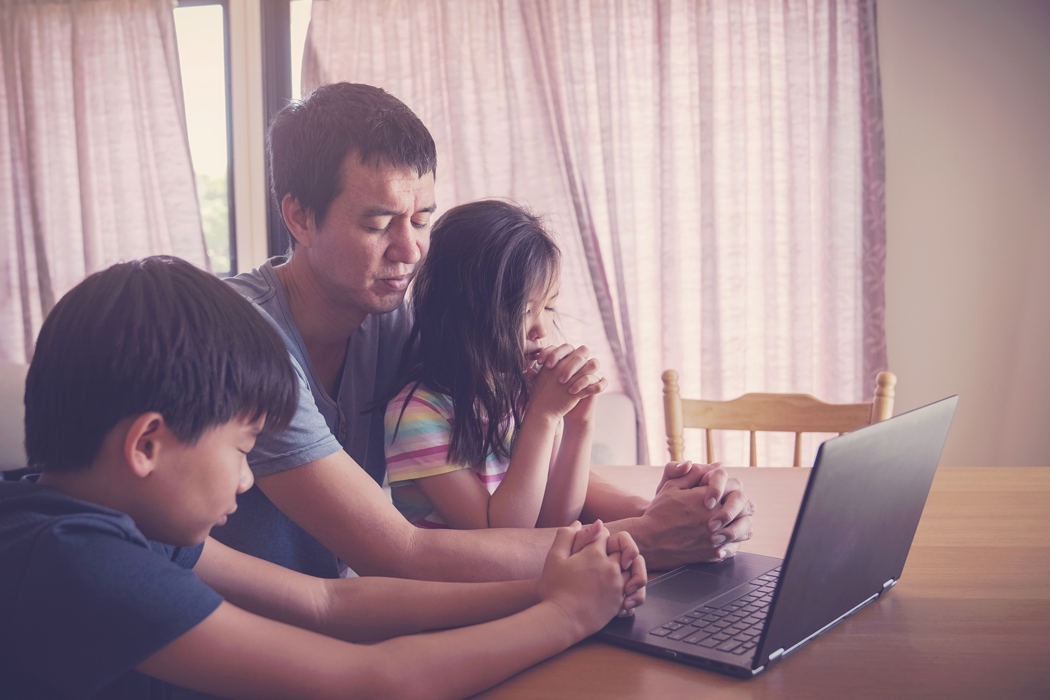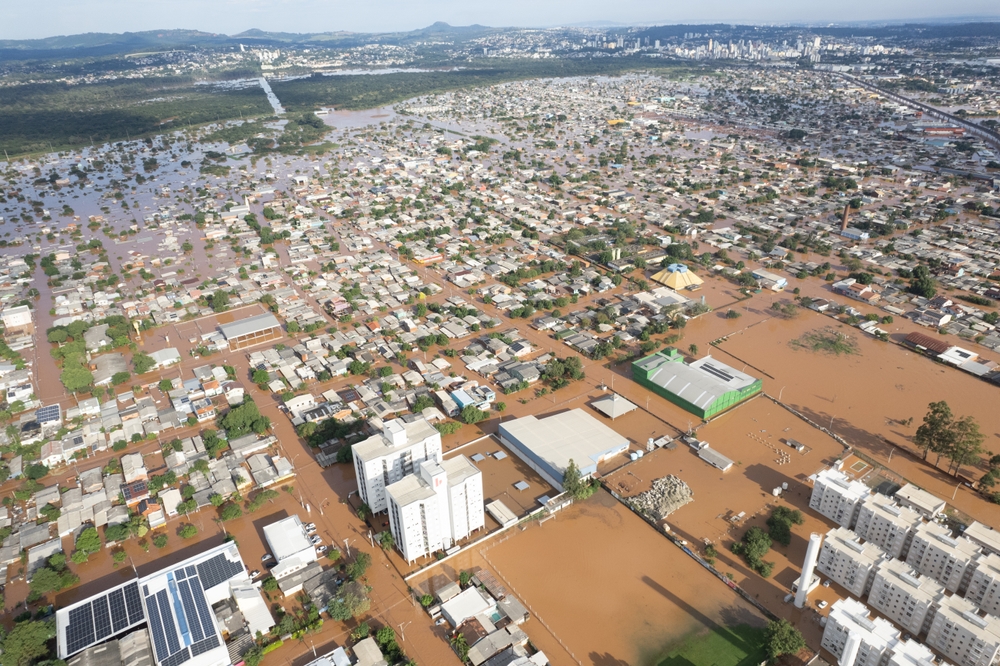COVID-19 and Religion: The Internet of Prayer

In times of uncertainty and despair, tragedy and trial, many of us turn to religion. To stand together in prayer gives us strength. But, to do so now endangers our health and the lives of others. How have organized religions adapted to COVID-19 to continue caring for their flock?
Last March 2020, when many countries went on lockdown because of COVID-19, Google searches for prayer reached the highest level ever recorded. It surpassed major religious events that call for prayer, such as Easter, Ramadan, and Christmas.
As the doors of churches, temples, mosques, and synagogues around the world closed because of the pandemic, people turned to the Internet to continue practicing and enriching their faith.
Ritual goes virtual
“Imagine if we were in 2005, where we didn’t have live streaming, we didn’t have this amazing broadband. It’s just an amazing, amazing, blessing from God,” says Sheikh Abdirahman Kaariye, the Imam in Bothell, Washington.
Around the world, different religions used Facebook Live, Instagram, and Zoom to live-stream religious services.
In the Philippines, several churches began live-streaming masses in April. Pins of Light, an online repository of Catholic homilies, retreats, reflections, and prayers, held an online advent recollection and one-minute Simbang Gabi reflections.
This Christmas season, the Manila Cathedral is live-streaming Misa de Gallo, Christmas Eve Mass, and Christmas Day Mass on their Facebook page and YouTube channel. The Church of the Gesu at the Ateneo de Manila University is also live-streaming their Misa de Gallo on Radyo Katipunan.
The Seventh-day Adventist Church live-streams its Filipino worship services on Facebook and has an online Bible school on its website.
In Japan, the Temmangu Shrine, founded in 949 AD, streamed online what is usually a private Shinto ceremony as part of the annual Tenjin Festival in Osaka, one of the top three religious festivals in the country.
The Onoterusaka Shrine in Tokyo brought their rituals online. They accepted messages from worshippers, which were then printed on a “virtual wooden tablet” and offered to Shinto gods to ward off evil spirits and the pandemic.
“I thought about how people can pray and have a peace of mind at a time everyone is feeling uneasy about all the news and going through major changes in their life but still cannot go out to pray. The idea is to provide a chance for people to pray from home,” head priest Ryoki Ono said.
In Sydney, Australia, the Bochasanwasi Akshar Purushottam Swaminarayan Sanstha (BAPS) Temple live-streamed their regular Sunday assemblies. The first online assembly was watched on 4,500 devices across Australia and New Zealand.
In the United Kingdom, five million people tuned in to a service led by the archbishop of Canterbury at an improvised altar on his kitchen table. Broadcast on the BBC and Facebook, this first virtual service attracted the largest congregation ever.
Come together on Zoom
“Traditional Jewish law requires 10 adult males to be physically present in a room for daily prayer services. This health crisis has compelled a unique reframing of Jewish law to think about technology as a new modality of physical presence,” says Laura Yares, assistant professor of religious studies at Michigan State University. “This has enabled prayer services to be conducted by counting 10 people in a ‘Zoom room’ as a reinterpretation of Jewish laws about physical presence.”
During the month of Ramadan, Muslims around the world broke their fast on digital spaces to retain a sense of community. Inspired by her friends’ online Easter services and virtual Passover Seders, Minneapolis-based programmer Fadumo Osman created RemoteIftar.com, which matches Muslims in the same time zones to share a meal over Zoom.
"One goal for Remote Iftar is to bring us together to not only break bread virtually but to share our thoughts and how we're feeling in the absence of those conversations happening in the halls of mosques or the home," Osman shared with Insider. "This presents a window between personal time and nightly taraweeh prayers to practice community and promote a sense of communal experience."
Growing your faith online
“American Buddhism tended to already be highly technologically savvy before the novel coronavirus, so many groups or organizations transitioned swiftly to online meditation workshops and seminars,” shares Arthur Versluis, professor and chair of the Department of Religious Studies at Michigan State University.
To help ease people’s anxiety about the pandemic, American Buddhist magazine Tricycle has made a calendar of free online meditation resources.
In Guangdong, China, Buddhists can scan a QR code to log on to the online program of the Putuo Monastery. They can then choose from 12 different ways to participate in Buddhist practices at the monastery. Some of their options include making offerings to Buddhist statues or ancestral tablets, donating for monastic buildings, and helping print scriptures.
An online dashboard of live Islamic lectures, classes, and conversation and study circles was created by Sara Alattar and Heraa Hashmi last March. These programs, once restricted to local mosques, are now available for Muslims around the world to take part in.
“New circumstances are an opportunity for a unique spiritual experience, although one not hosted in our mosques like usual,” Alattar told the Religious News Service. “We can use these community resources as a means of inspiration, knowledge and community to supplement our constant acts of worship throughout the day. We can build our own homes into mosques by the end of Ramadan.”
Apps for the soul
Believers around the world are also turning to apps to sustain their faith during these uncertain times.
PrayerLincs, a Tennesee-based app, enables users to share prayer requests with various groups and also have a private prayer journal.
Since the lockdown in the United Kingdom began, the Church of England has seen an additional 10,000 installations of its “Time to Pray” app.
The Churchome app provides users with daily content, live events, on-demand classes and sermons, and digital groups. New sign-ups on its app increased by 60% in a week, while virtual Sunday service attendance rose by 23%.
Last February, pray.com had more than 500,000 monthly users. By March, there were 850,000. The free version of the app lets users join a church, post prayer requests, and make donations. With the paid versions, users can access faith-based audio content.
“No one wanted to touch religion five years ago,” Peter Pham, co-founder of incubator and venture fund Science Inc., which backs Pray.com, told Bloomberg. But this mindset has shifted because of the pandemic. “There are many avenues to tap and more companies will be born out of this growing need for a creative spiritual-digital experience—the opportunity is mind-blowing,” says Pham.
The future of faith
As the pandemic has shown, a crisis can trigger faith. For many struggling with fear and loneliness during this global crisis, the Internet of prayer has brought comfort and strength. Technology has proven to be an important stopgap, keeping communities engaged and connected. Worship is now no longer constrained to a certain place or time. God is no longer found only in stone or wood, but also inside you.
Technology for faith shows great promise, but one must also consider that most religions have a huge older population—most of whom may not the level of digital access and literacy required for online worship.
And like in many aspects of life—especially one that is both so personal and communal—technology cannot completely replicate the solace that face-to-face interaction can give. During times of sickness and death, we need the comfort of religious rituals, a gentle embrace, and whispered words to prop us up.
When the world emerges from this pandemic, what will religion look like?
“I think virtual everything is here to stay and religion is no exception. I think we will continue to see the digital become a more integral part of our lives, as it was even before the pandemic,” says Dheepa Sundaram, assistant professor of the Department of Religious Studies at the University of Denver.
“I don’t think the material sacred space will disappear or even become less important for most religious traditions. Rather, I think we will see more innovation in how adherents access the sacred,” Sundaram shares. “I think one of the most interesting questions for me as a researcher of digital religion will be how religious communities will navigate questions of access/accessibility, authenticity and authority. In other words, what will this increased online presence do to increase access to these spaces?”
For centuries, religious institutions have survived wars and pestilence. During those times, the faithful turned to religion for strength and comfort. To adapt to the needs of their believers, religions will need to find an intersection between the virtual and real to keep the faith.
As one of the Top 20 EMS companies in the world, IMI has over 40 years of experience in providing electronics manufacturing and technology solutions.
At IMI, we believe that humanity drives technology, and we direct our passion at solutions that enhance our way of living. With more than 400,000 square meters of factory space in 22 factories across 10 countries, we are positioned to build your business on a global scale.
Our proven technical expertise, worldwide reach, and vast experience in high-growth and emerging markets make us the ideal global manufacturing solutions partner.
Let's work together to build our future today.
Other Blog



